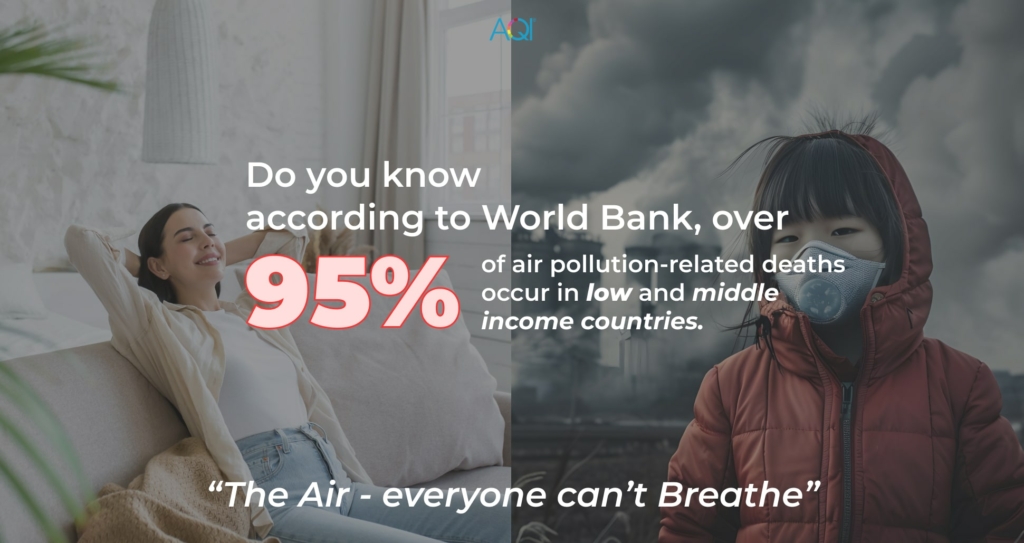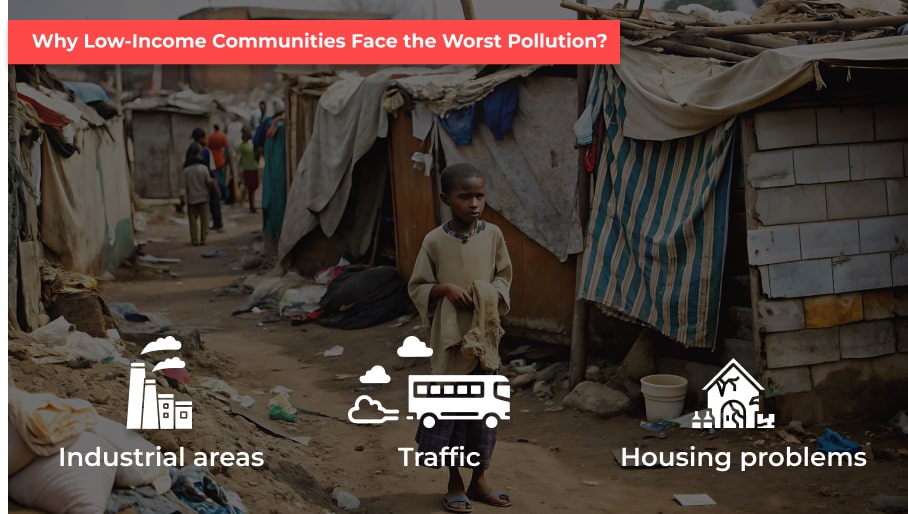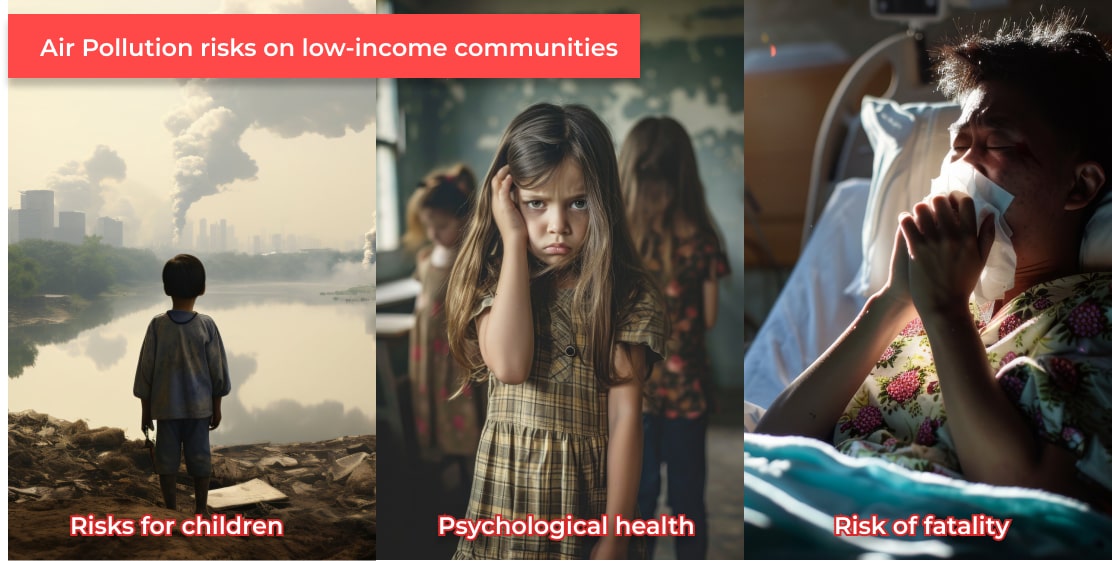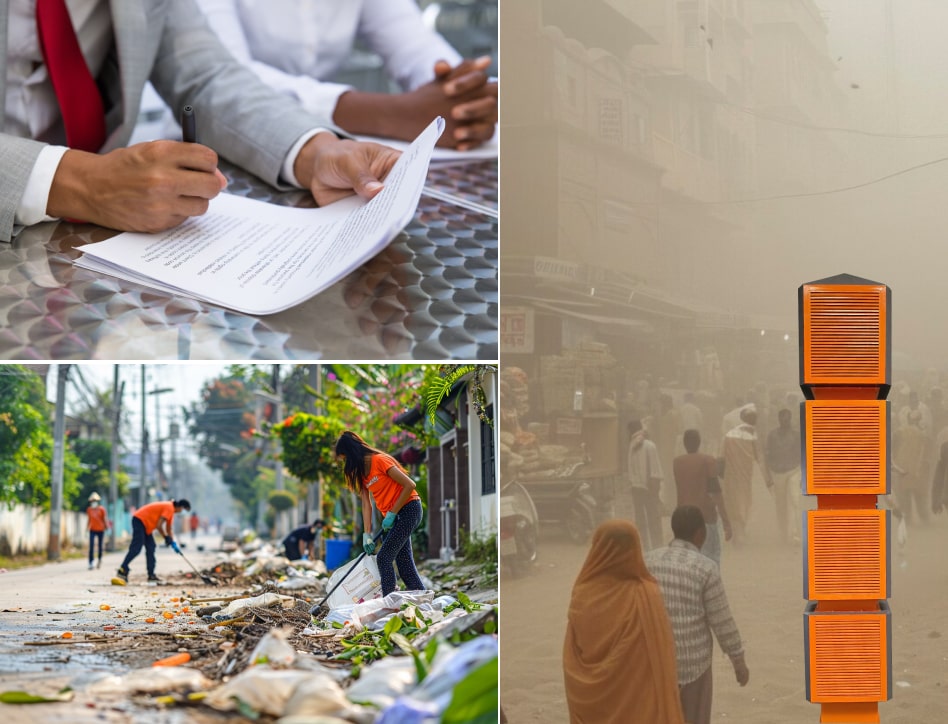Clean air is something that many of us take for granted but do you know many people from low-income communities suffering to breathe clean air? Well, the cruel irony is that the least responsible people are suffering the most from air pollution! Air pollution and inequality highlight the need for clean air for everyone. But have you considered why poor areas have more deaths and health conditions? Because it is not only the food or water, it is also the air they breathe!

Do you know according to World Bank, over 95% of air pollution-related deaths occur in low and middle-income countries? It is not only a mere fact of air pollution because it is a reflection of socioeconomic inequality on a global scale. These people are working hard every day just to survive but the air around them is compromising with their health. Thus the blog explores the connection between air pollution and inequality and what measures can be taken to protect exposure.
How air pollution Exposure is Unequal?
Many of them are unaware of what they are breathing that is also taking their lives slowly. It is because not everyone knows that air pollution is compromising their health. Besides, low-income communities in many countries live in highly air-polluted areas. Additionally, more issues occurred as they could not breathe the clean air. Not everyone has the facility of clean air with purifiers and air quality monitors. The following locations have high air pollution levels and low-income communities residencies:

1. Industrial areas:
Many factories and industries are often situated near or in low-income neighbourhoods. These industries and factories emit high levels of particulate matter PM2.5 and NO2. According to an article published in NIH, the burden of PM2.5 is 1.35 times higher on low-income families than the overall population.
2. Traffic:
The poorest areas face more often traffic congestion. It leads to more exhaust pollutants exposure including PM2.5 and other fumes. PM2.5 exposure can result in heart disease, lung cancer, stroke and respiratory infections.
3. Housing problems:
Slum areas are majorly overcrowded with poor housing. As these houses have poor ventilation. Moreover, more people results in trapping various pollutants, dust, mould and chemicals.
How the air pollution and inequality stand together?
Everyone has the fundamental right to breathe clean air that nobody can take from us. Today, we breathe clean air and protect ourselves from the air pollution exposure. But is it really the truth? Can everyone breathe clean air? The answer is no income communities can afford to breathe clean air. Here is how air pollution in low-income communities is different from others:
1. Limited access to clean air:

Air quality is a major concern in many countries, thus air purifiers and air quality monitors are available. Unfortunately, high-quality air purifiers have much more expensive charges that are not affordable. Moreover, mostly, these are out of the reach of low-income households. They cannot buy an air purifier to breathe clean and fresh air. It results in exposure to various pollutants without any protection.
2. Lack of air quality importance knowledge:

Air pollution is a major issue just like other pollution affecting the lives of many people. However, many communities are unaware of the air pollution issue. Lower-income communities
3. Limited medical care access:

Lower-income communities frequently lack the political power to advocate for stricter environmental regulations or cleaner industrial practices.
What are the air pollution effects on low-income communities?
Air pollution is the emission of several harmful gases in the air. Its exposure for short or long-term periods can lead to various health issues. It can result in COPD, strokes, lung cancer, respiratory infections, asthma and other conditions. Every year, PM2.5 exposure is taking the lives of many people. According to the World Bank, 94% of the global population is facing exposure to unsafe PM2.5 levels. Out of this, over 47% of the population are residence of low-income countries. Here are a few risks of air pollution and inequality:

a. Risks for children:
Air pollution highly affects kids’ health as they are at a high risk of developing asthma conditions. Besides, a report highlights that children in low-economic communities are at more risk than others. It is because of the lower immunologic responses and lower health care resources.
b. Psychological health:
Air pollution is not limited to health issues because it can lead to mental health conditions as well. Yes, many reports have found that air pollution exposure also increases stress, anxiety, depression and other problems. Additionally, the cycle of poverty and poor health can result in increasing these cases.
c. Risk of fatality:
Healthcare facilities are highly expensive which makes it difficult for low-income families to afford. Since, they face issues in choosing between the necessities and healthcare. Hence, it increases their chances of developing severe health conditions that can be life-threatening.
What can be done to address air pollution and inequality?
Addressing air pollution and inequality is not only important for the environment but also for social justice. It is possible with the policies of governments and organizations. Here are some points to address the issue of air pollution and inequality worldwide:

♦ Changes in policies:
Governments and organizations can work on prioritizing strict regulations for various activities that cause air pollution. It includes the emissions from vehicles, industries and other sources. Moreover, they can increase the investment in green spaces to protect everyone.
♦ Affordable clean air for everyone:
Air purifiers and other cleaning technologies can be built within the country and can be more affordable. It helps in improving indoor air quality and provides clean air to breathe. Or organizations can invest in installing purifiers in public places for the protection of the communities.
♦ Community support:
Awareness of air pollution and monitoring among low-income residents can help in advocating the importance of clean air. Moreover, support services or affordable healthcare access can be provided to help with health impacts.
Conclusion
Air pollution is a global crisis that should not be only for low-income communities suffering. Since, they breathe in more pollution and face high chances of developing serious health issues. Hence, we should also ensure that everyone is breathing clean air without any inequality. We together can create a world with clean air for everyone by addressing the root causes.
This post is also available in:
![]() Global
Global